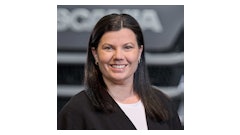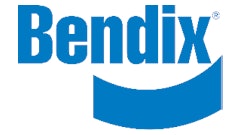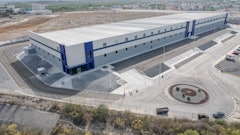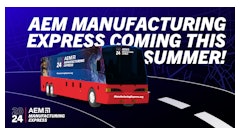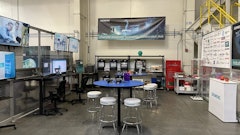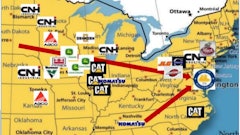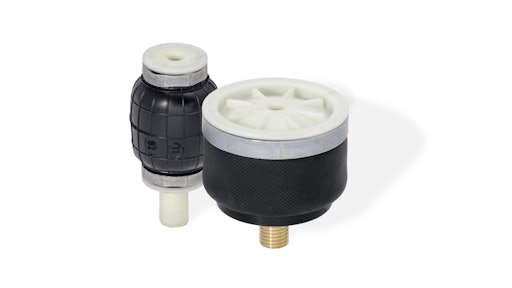
responses by Douglas A. Duesing, Product Manager – Air Springs, Industrial & Off-Highway, ContiTech
[TECH OF THE FUTURE] Where is the heavy-duty vehicle industry lagging technologically?
In the Agriculture Industry segment of Seeders & Planters, a cost-effective technology solution is lagging for providing the right down force on each row unit to provide the right seed depth for every row and any condition. Down force is by far the most common issue that goes unaddressed, but which has a profound effect on crop yield. The conditions of the row can be caused by any number of factors including:
- Agronomy of soil – different soil types require different down forces for seed depths
- Water in soil – heavy moisture content conditions or dry, crusty fields
- Topography of field – rolling terrain with hills and valleys or flat fields
- Condition of field or row – wheel tracks, old road beds, clay knobs, headlands or soil
Current aftermarket solutions that the OEMs are partnering with, or currently designing, in order to match the correct down force with field conditions involve the use of hydraulic actuators with feedback for individual row control. This boasts the ability to sense down force at ‘military precision’, or up to 200 times/second, and can adjust this force in fractions of a second. Unfortunately, at a time when commodity prices are a one-third of what they were three years ago, this solution comes at a premium of three times the cost of an air-driven system. And is this type of precision from hydraulics required for in the field adjustment? The real issue is a misunderstanding of the capabilities of existing pneumatic technologies.
[TECH OF THE FUTURE] What technology breakthroughs would help to propel mobile off-road vehicles ahead?
The technology of pneumatic, or air-driven, actuators and controls is given little attention by major Planter/Seeder companies and OEMs, due to a misunderstanding of this technology. Downforce is a function of the pressure and area of the actuator (Force = pressure * Area). Because of this, any increase or decrease in pressure across the same area will likewise increase or decrease the force of the actuator.
By utilizing pressure sensors or transducers, which can sense pressure and hence down force at the same, or better sample rate as a hydraulic system (2 milliseconds or 500 times/second), these can be used as an input to an Electronic Control Unit to send a signal to a proportional regulator that can adjust every 50 milliseconds (0.050 seconds), or 20 times/second. This type of regulator, known as an ‘i-to-P’ or ‘E-to-P’ regulator accepts a current (i) or voltage (E) signal from the controller and provides an outlet pressure proportional to the inlet pressure. The pressure sensor, combined with a proportional regulator, creates a closed-loop system, not currently employed in this application. By properly applying an air spring to handle the highest maximum force seen, and eliminate the issue of compressibility with air systems, in combination with an up force air spring in the system, an upgraded ‘smart’ pneumatic down force system can be had for roughly half the price of a hydraulic version. Also, the desired and proven effect on increased yield holds true.
In addition to the cost of the hydraulic version, the more hydraulics added to a system, the more power it will take from the engine to run the hydraulics, which means less horsepower output from the engine.
Other pneumatic air bellow actuators and air spring vibration isolators can be included in the Agriculture Industry, ranging from Tractor Cabin and Axle Suspension, as well as on the Planter & Seeder row units. For instance, many axle suspensions use a large mechanical spring over a shock, which can be replaced with a rolling lobe piston style or convoluted air isolator. The cabins on a variety of Ag machinery are supported by rubber mounts, when these can be better tuned and create a softer ride for the operator by using a sleeve-type air spring isolator. These are successfully used for decades in the On-Highway Trucking Industry for cabin suspension, as well as seat suspension.
Many Agriculture implements, from plows to tillage to grounds care equipment and again on planters, seeders and air drills, can benefit from air bellow and air spring technologies. On Planters & Seeders, the Gage Wheel and Closer Disks can be controlled by an air bellow actuator or sleeve-type air actuator. Currently, this is done with mechanical settings and mechanical springs, which are not only time-consuming to set for a 30-unit or more Planter/Seeder, but is also limited to those settings. Air bellow actuators can provide infinite settings, all controlled from the cabin, with the technology previously described.
[TECH OF THE FUTURE] What current technologies have the most potential for future gains? For example, prognostics, telematics, robotics, drones, etc.
The incorporation of electronic controls for in-cabin adjustments of many different settings has the most potential for future gains. Factors can be adjusted by the operator or pre-programmed for different factors such as agronomics, operator comfort and ergonomics as well as speed of the equipment moving through the field. All of these advancements in technology will lead to increased yields and future gains.
[TECH OF THE FUTURE] What technology are you waiting for (or waiting to reach a certain point of advancement) that would allow you to develop your next generation of product?
Acceptance of the pneumatic technologies described above to replace mechanical springs and newer expensive hydraulic systems.
[CHALLENGES] What new challenges have arisen that effect how you design and manufacture your product, how you do business and/or how you go to market?
The challenge: lower margins as pricing for components get more and more competitive. This affects our business by the need to innovate our manufacturing processes and product offering by differentiating technologies, investing in new product development and offering system solutions. These advancements result in instant ROI to the end user, but come at a cost to the OEM.



